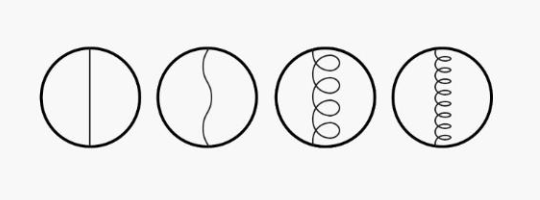Your hair is unique. Accurately identifying your hair type is just the first step towards reaching your desired style and maintaining your hair’s condition.
This can help you to determine which hair product, techniques, and tools to use.
Hair type refers to three things:
- Density - The quality of the hair
- Texture - The width of each individual strand
- Shape - The pattern of each individual strand
Density
If you were to gather and grip all your hair, as if to tie it into a ponytail, how much hair do you have? Or, if your hair isn’t long enough to be gathered into ponytail, how long does it take to dry naturally?
If you have a small amount of hair that could be help with a small elastic, or it dries quickly, your hair is LOW Density.
If you’re not sure or it falls somewhere between the two, your hair is MEDIUM Density.
If you have a significant amount of hair, or it takes a long time to dry, your hair is HIGH Density.
Texture
Texture determines if your hair is fine or coarse. You have a lot and lot of fine hair, or you can have a small amount of coarse hair stands.
To check, take a single hair stand and rub it between your fingers.
If you can barely feel the strand between your fingertips, your hair is FINE.
If it feels like a strand of thread between your fingers, your hair is COARSE.
Shape
Finally, let’s look at the shape of your strands and overall pattern of your natural hair.
Whilst hair types are unique, at Dyson, we classify these not four main types:
Type 1 - Straight hair
The shape of straight hair stands usually has a rounded cross-section and can be silky. Occasionally you may want to add a little shaper to your style, so resisting excessive heat can support healthier hair.
Type 2 - Wavy hair
Wavy hair strands still have a rounded cross-sectional area but are flatter than straight hair. Weather you choose to smooth or to maintain natural waves, keep your hair looking health and embrace your waves by styling it with airflow.
Type 3 - Curly hair
Curly hair needs to be treated with care to help protect against breakages and keep it hydrated. The cross-section area of curly hair stand has a flatter and more ellipsoid shape. Step away from heavy formulas to let the curls bounce freely.
Type 4 - Coily hair
It’s easy to damage tightly-coiled curls because the hair may tangle easy. We know that damp hair is stretchy and delicate, so the air is to be as gentle as possible when smoothing out your hair. Type 4 hair has a flatter more ellipsoid shape to form tight coils.
The following image should help to identify the hairs shape and patter that best represents your hair stands.


What next?
Now that you’ve identified your hair type, it’s time to get started with styling.
We’ve created a host of content that can help you do just that. Simply visit our ‘Getting started with Styling’ forum to get started.


